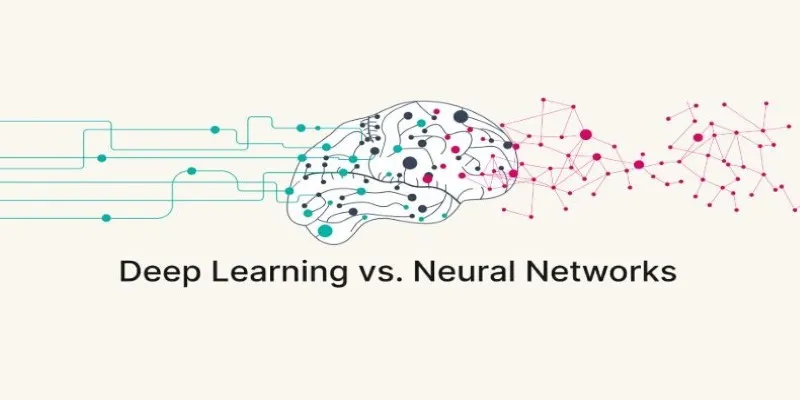Artificial Intelligence (AI) is revolutionizing human interaction with technology, making processes faster, more intuitive, and highly personalized. This article explores the advancements in AI-powered interfaces, their impact on user experience, and how they’re shaping the future of communication and productivity in our rapidly digitalizing world.
Voice Assistants & Natural Language Processing

Voice assistants, powered by AI and natural language processing (NLP), have seen significant advancements over the years. From Siri to Alexa and ChatGPT, these technologies showcase the progress in human-computer interaction. Each breakthrough reveals how AI evolves to handle tasks ranging from simple commands to complex dialogues.
Siri
Launched in 2011, Apple’s Siri was among the first mainstream voice assistants, setting a benchmark for voice recognition and AI-assisted task performance. Initially praised for handling simple tasks like setting reminders or answering questions, Siri now boasts contextual understanding, enhanced personalization, and seamless integration with Apple’s ecosystem, including HomeKit. Siri’s evolution highlights the foundational role early voice assistants played in shaping today’s conversational AI landscape, offering convenience and accessibility to millions.
Alexa
Introduced by Amazon in 2014, Alexa transformed voice interaction by integrating with smart home technology. Beyond answering questions, Alexa allows users to control lights, thermostats, and appliances using voice commands. Its integration with third-party devices has expanded possibilities for productivity and entertainment. Over time, Alexa’s machine learning capabilities have improved its accent and dialect recognition and ability to learn new use cases. By accelerating smart home adoption, Alexa demonstrated how voice assistants could seamlessly blend into daily life.
ChatGPT
ChatGPT, an advanced AI model developed by OpenAI, marks a significant leap in conversational AI. Unlike traditional voice assistants, which respond to explicit commands, ChatGPT excels at interpreting and responding to nuanced, human-like requests. Initially launched as a text-based interface, it’s designed for diverse applications, including creative collaboration, customer service, and technical support. Through deep learning, ChatGPT generates responses that mimic the nuance and richness of human dialogue. Its versatility underscores the transformative power of generative AI, opening new avenues in education, customer service, and beyond—pushing the boundaries of human-computer interaction.
AI in UI/UX Design
Artificial intelligence has significantly transformed User Interface (UI) and User Experience (UX) design. AI enhances the design process by promoting personalization, optimizing workflows, and developing inclusive user experiences. Its potential is reshaping how people interact with digital products.
Personalization Using AI
AI enables designers to create tailored experiences for individual users, changing how people engage with digital spaces. By observing user behavior, preferences, and patterns in real-time, AI can offer personalized content, structures, or functionality. For example, it can recommend products based on past purchases, highlight frequently used features in navigation menus, or adjust visual design to suit personal tastes.
This personalization makes digital experiences more engaging and contextually relevant, enhancing user-platform attachment. Companies benefit from increased satisfaction, improved retention, and greater loyalty. AI-driven personalization helps users feel valued and understood.
Streamlining Design Workflows
AI software simplifies repetitive tasks like prototyping, testing, or creating design components, allowing designers to focus on problem-solving and creativity. Analytical tools, such as AI-based analytics, provide comprehensive insights into user behavior, facilitating informed design changes. Automation of workflows leads to faster and more efficient design processes.
Improving Accessibility with AI
AI plays a crucial role in enhancing accessibility in UI/UX design. Tools that offer real-time adaptive content, captions for visual impairments, or translations increase usability for all users. AI makes digital spaces inclusive by identifying barriers for individuals with disabilities. Accessibility design not only complies with regulations but also ensures equitable experiences for diverse audiences.
Brain-Computer Interfaces (BCIs)

Brain-Computer Interfaces (BCIs) represent a groundbreaking fusion of neuroscience and technology. BCIs facilitate direct interaction between the brain and external devices, unlocking new possibilities for medical and non- medical applications. Their impact on accessibility and human-machine interaction is significant.
Applications of BCIs
BCIs are transformative in medicine, particularly for individuals with motor impairments or neurological challenges. They enable people to control prosthetic limbs, wheelchairs, or even compose messages using neural signals, bypassing physical limitations. For instance, a paralyzed patient can operate a robotic arm or type messages simply by imagining the action.
BCIs are also revolutionizing rehabilitation, aiding patients in regaining lost motor functions. Beyond medicine, BCIs are being explored in gaming and virtual reality (VR), allowing users to play games or explore virtual worlds with their minds, offering experiences once considered science fiction.
Challenges in BCI Development
Despite their potential, BCIs face significant challenges. A major obstacle is accurately decoding neural signals, as the brain generates complex, noisy data. Invasive BCIs, requiring implants, pose safety risks such as infection or brain tissue damage. Development is costly, relying on advanced hardware, software, and specialized research teams.
Moreover, robust real-time processing is necessary to make BCIs viable for daily use. Ethical issues, including privacy and misuse of neural data, further complicate progress. Overcoming these challenges is crucial for BCIs to transition from research settings to everyday applications.
The Future of BCIs
Advancements in neuroscience, AI, and materials science are rapidly expanding BCI capabilities. The future may see non-invasive BCIs offering enhanced accuracy, comfort, and functionality. Wearable sensors and sophisticated brain imaging could replace surgical implants without sacrificing neural signal decoding.
Ethical & Practical Considerations
BCIs present numerous ethical and practical challenges that demand careful consideration as the technology evolves. Key issues to address include:
- Privacy Concerns : Ensuring the security and proper use of neural data.
- Access and Equity : Preventing disparities in who can benefit from BCI technology.
- Consent and Autonomy : Establishing clear guidelines for user consent regarding neural data usage.
- Potential Misuse : Addressing the risk of BCIs being used for surveillance or manipulation.
- Long-Term Safety : Investigating potential health risks associated with prolonged BCI usage.
Conclusion
The integration of AI and human-computer interaction is unlocking unprecedented opportunities to redefine how humans and technology coexist. From voice-driven assistants to thought-controlled interfaces, AI continually pushes the boundaries of user experience design. Moving forward, the focus will likely shift toward developing more powerful, ethical, and human-centered AI systems that prioritize inclusivity and usability. As AI becomes increasingly embedded in every aspect of life, the dynamic interplay between innovation and responsibility will shape the next era of human-computer interaction.
 zfn9
zfn9























